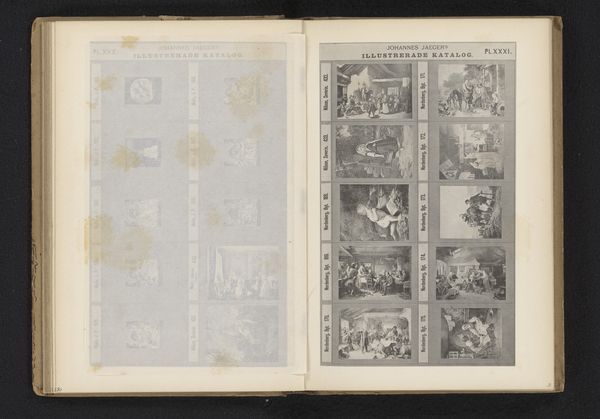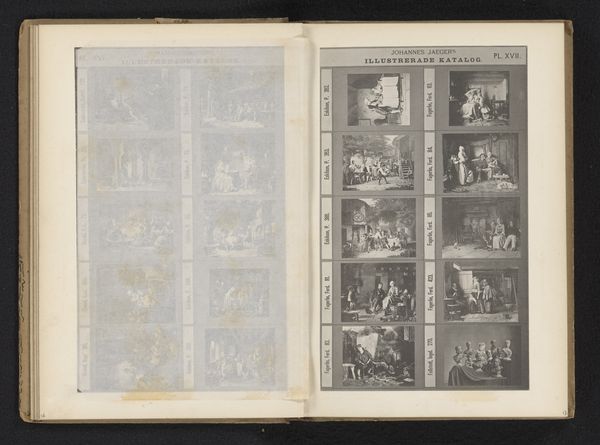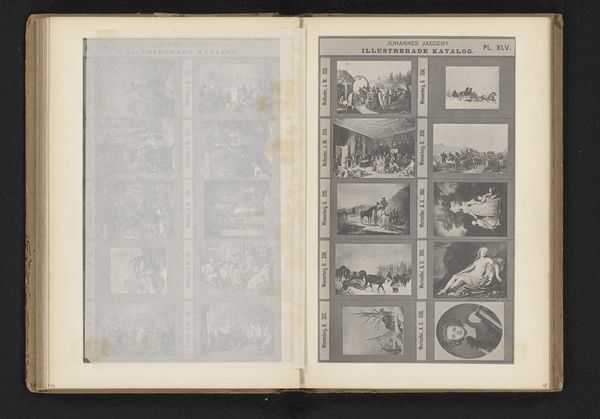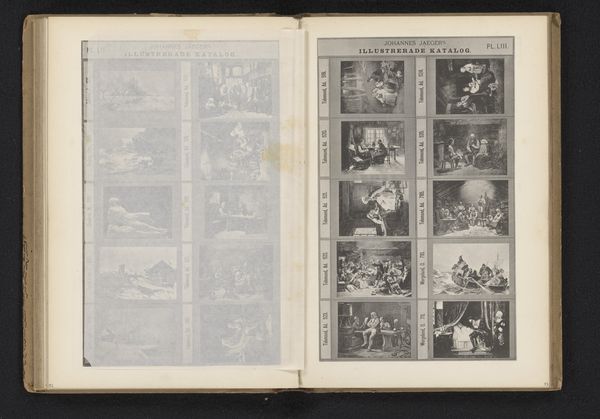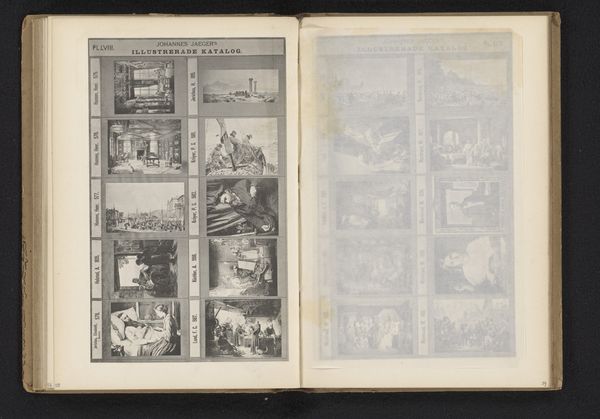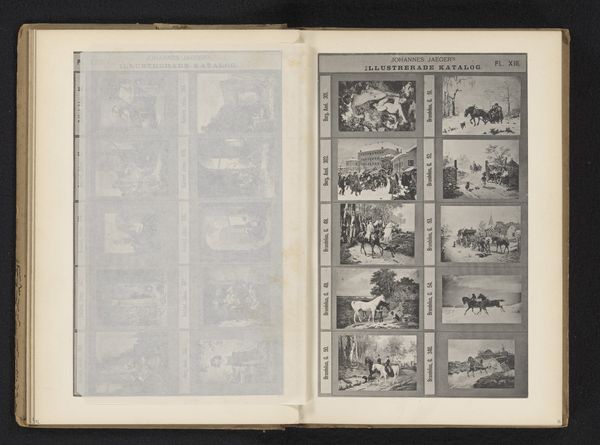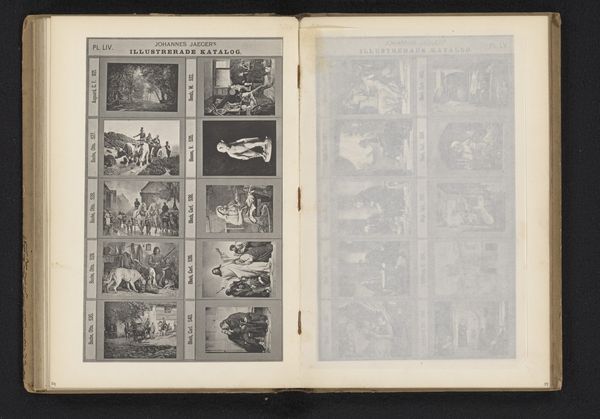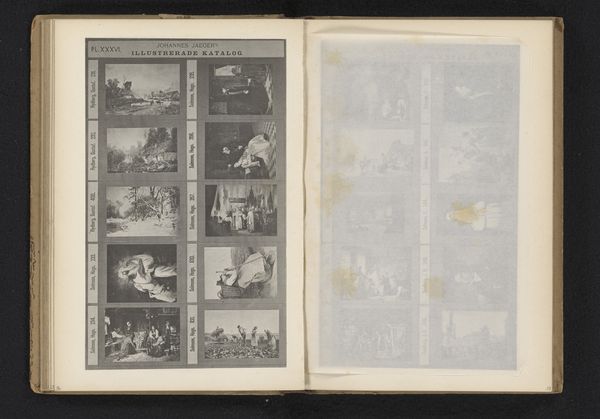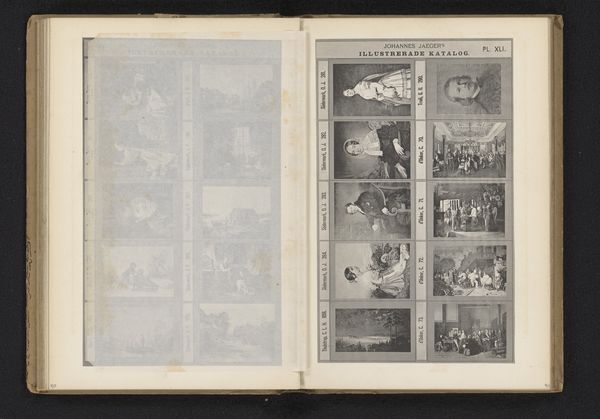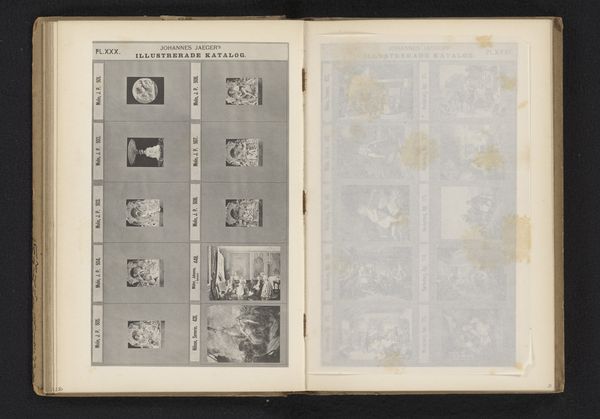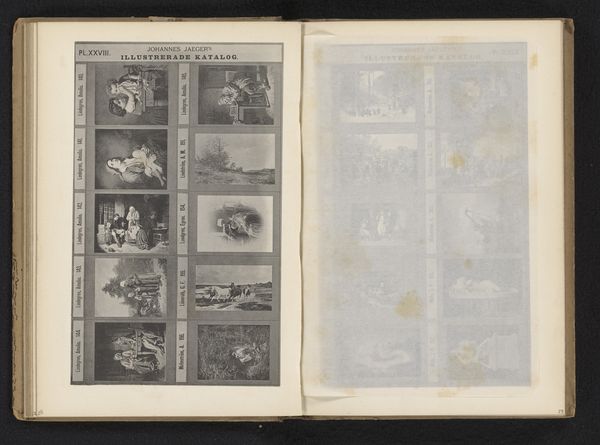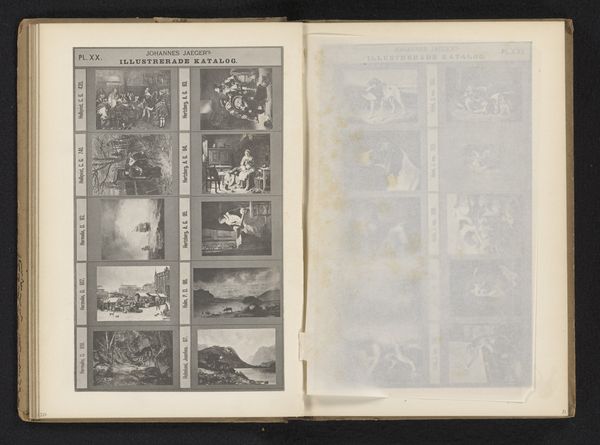
print, photography
#
portrait
# print
#
impressionism
#
landscape
#
photography
#
genre-painting
Dimensions: height 181 mm, width 111 mm
Copyright: Rijks Museum: Open Domain
Editor: This is "Fotoreproductie van tien genretaferelen" - a photo reproduction of ten genre scenes – dating from the 1870s or 80s by Johannes Jaeger. It's presented as a print within a catalog and feels like a glimpse into everyday life of that period, or at least, a curated view of it. What social commentary do you find within this compilation? Curator: Well, the catalog format itself is fascinating. It speaks to a burgeoning art market and the democratizing force of reproductive technologies like photography. We see these small windows into domestic scenes, landscapes, hinting at different social strata, but mediated through the artist’s, and then the photographer's lens. What stories are *not* being told here, and whose lives are conspicuously absent? Editor: That's a really good point. I hadn't considered the power dynamics inherent in choosing which stories get reproduced and circulated. Curator: Exactly. Genre painting, on which this is based, was often used to reinforce dominant ideologies about family, work, and national identity. Think about which social roles are being idealized – who has the leisure to be portrayed in these sentimental vignettes? It's crucial to consider the silences and the visual rhetoric deployed to create these seemingly innocent scenes. Consider also, how the act of reproduction detaches it even further from the "original" context. What do we gain, and what do we lose? Editor: So, it’s less about the individual scenes and more about the collective narrative they create and what that says about the society that produced and consumed them? Curator: Precisely. The catalog functions as a mirror, reflecting not just the lives depicted, but the values and power structures of the era. What seems charming on the surface reveals a complex web of social and economic relations when we start asking the right questions. Editor: This really shifts my perspective. I’ll definitely be looking at these types of images differently now. Curator: Excellent. Art history isn’t just about identifying styles, but about understanding how art actively shapes and reflects our understanding of the world, then and now.
Comments
No comments
Be the first to comment and join the conversation on the ultimate creative platform.
